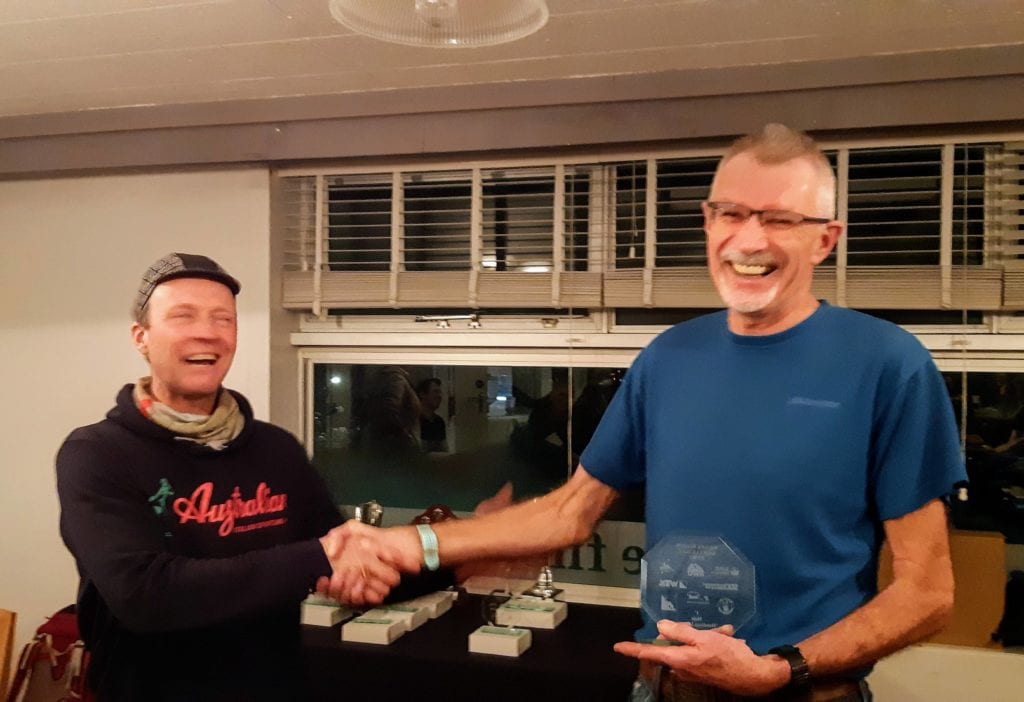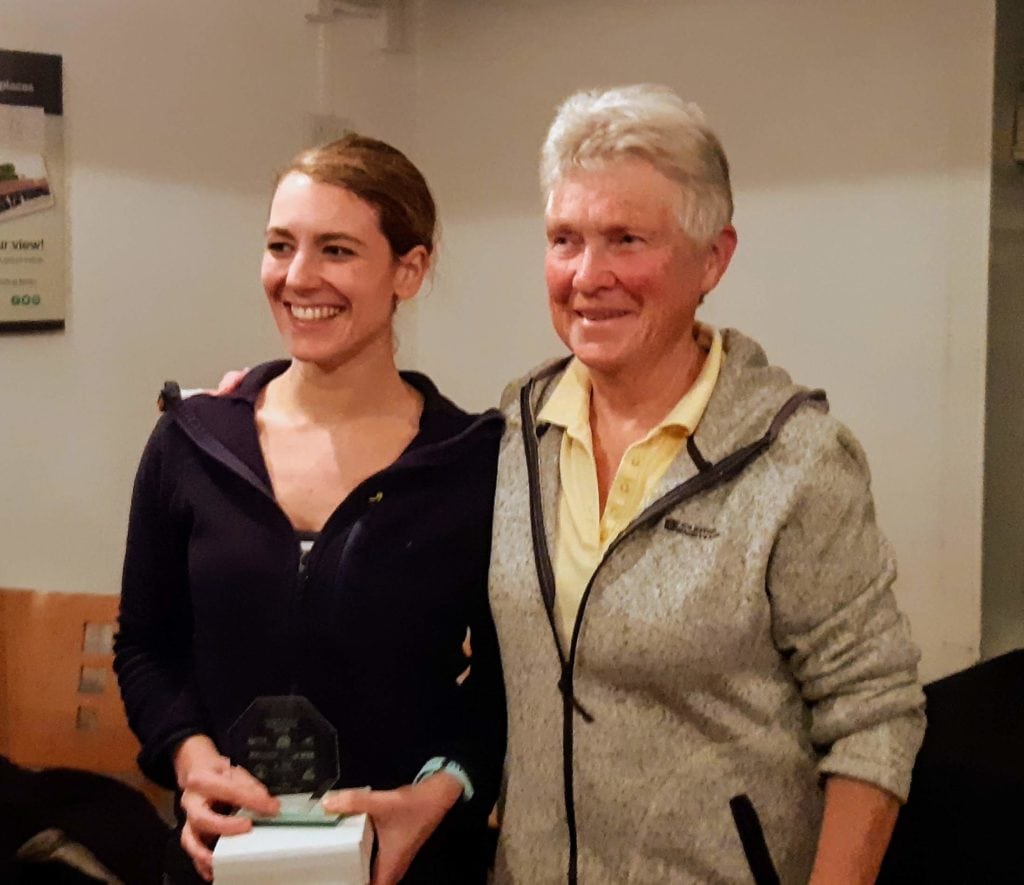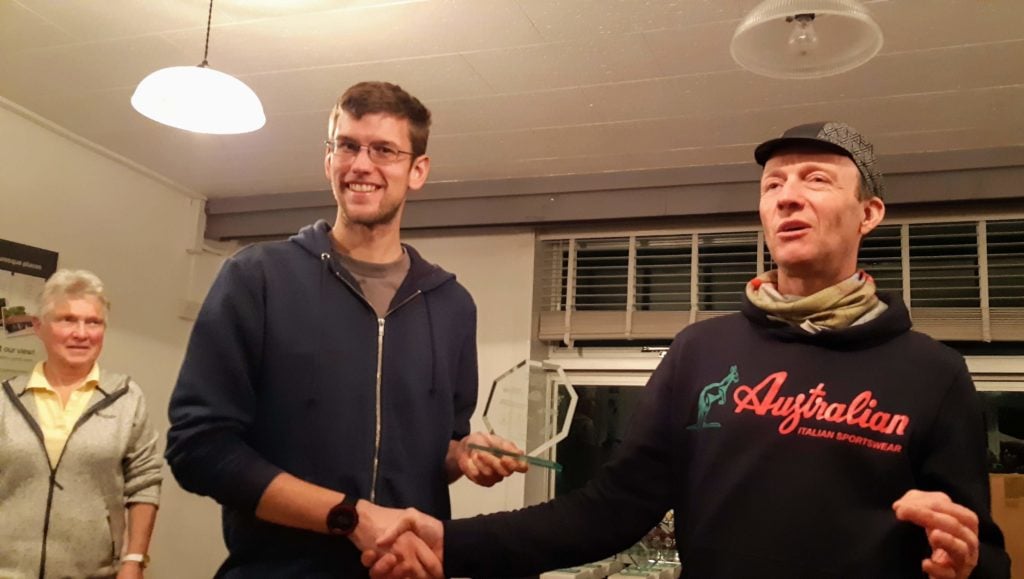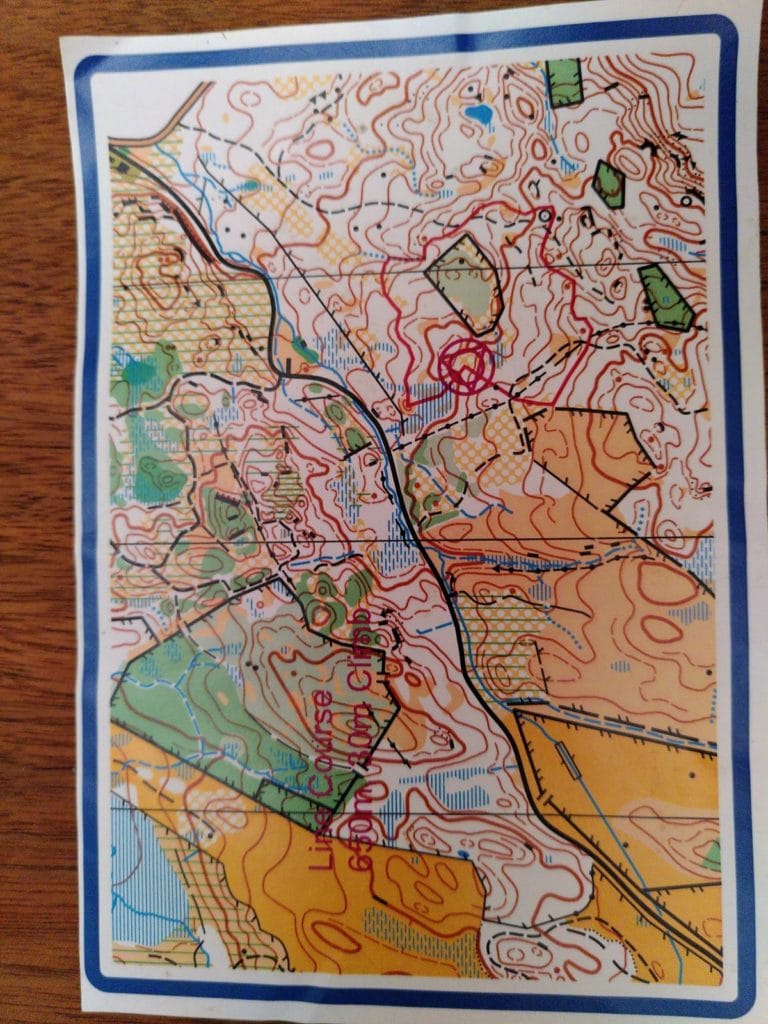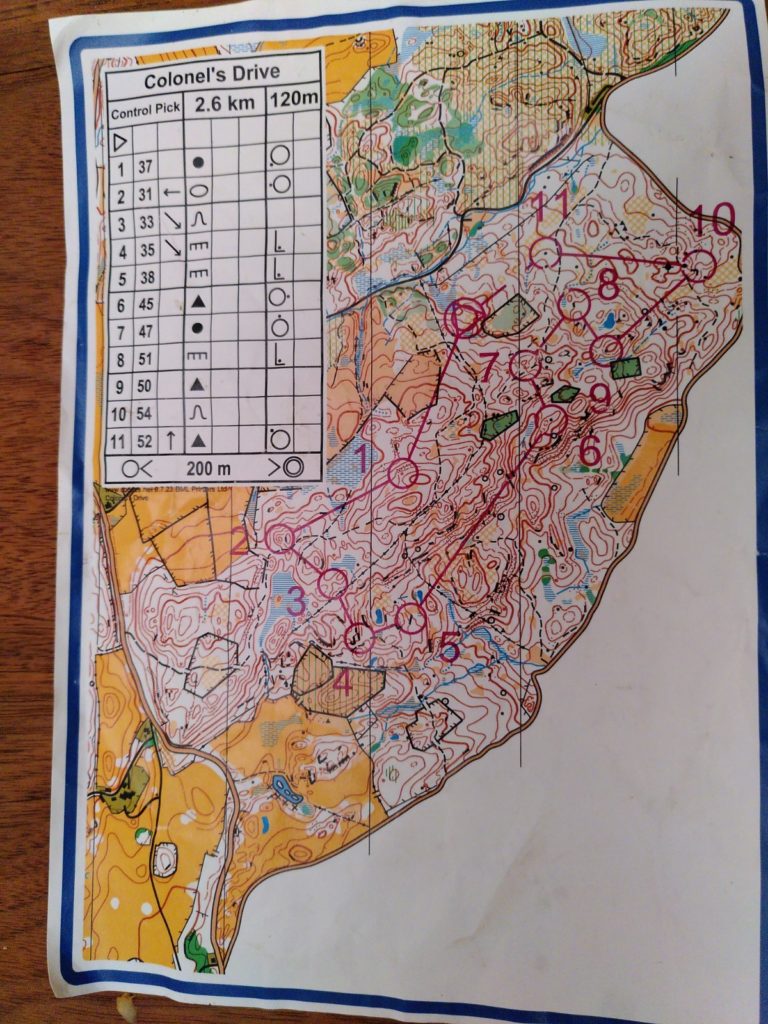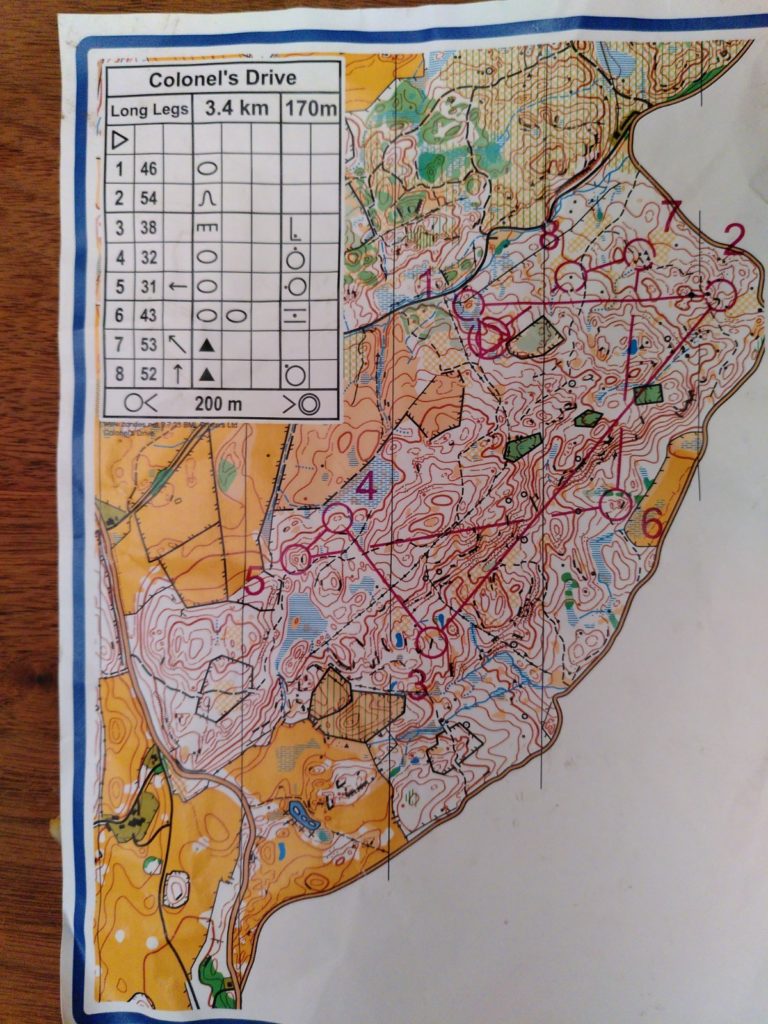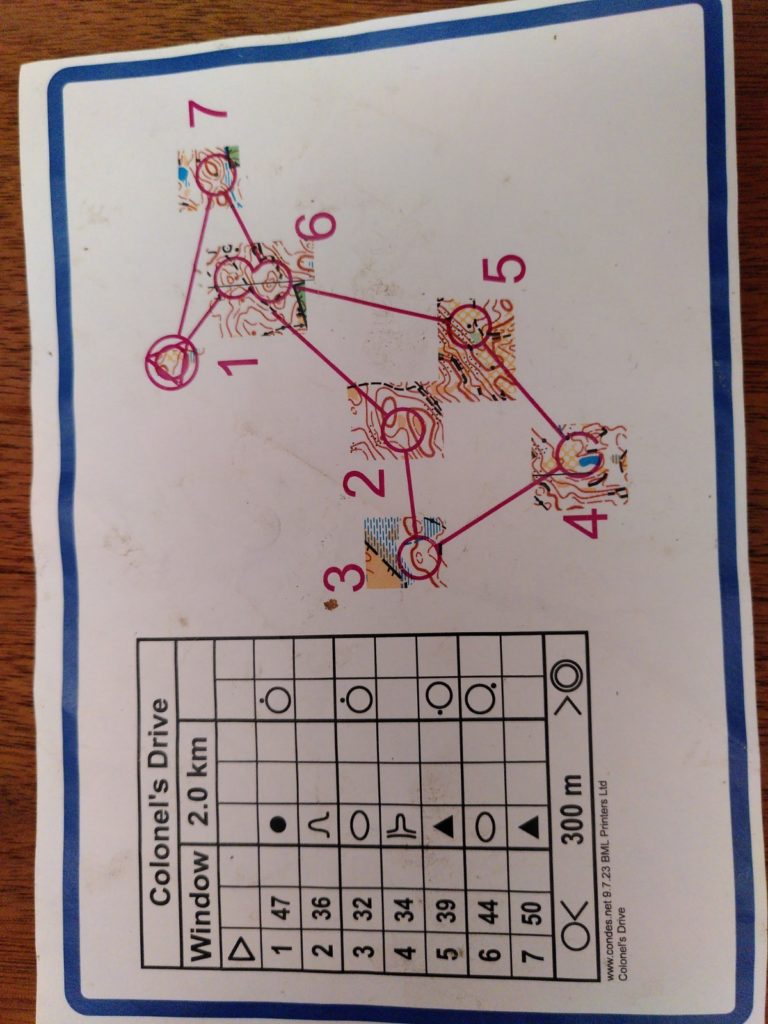First of all, apologies for the late posting, but I am abroad with limited wifi.
Quite a lot to report this week, we have four reports from members to read, two from a South West Training 3 day event in the Lake District, from the perspective of a junior (Lyra) and a parent (Nicola).
Then we have two reports from the British Night Championships (results here) at Hambleden, from the perspective of one of our chairmen (Julie) and one of our ‘elites’ (Peter). There was also the Chiltern Challenge (results here) the next day. So put the kettle on, grab a snack, and settle down for some serious O commentary.
We also have a report on the final heat of the Wessex Region Night League at Queen’s Park, which can be found at here. Congratulations to Rob Finch, Becca Ellis and Gavin. Results are here . Top 1o positions for Alan (1st), Peter (3rd), Gavin (5th), James (7th).
Before we start with the reports, don’t forget it’s our SW league event at Blackwater this Sunday, which Jon has planned and Tim has organised. See you all there.
SW training in Hawkshead
Lyra’s report
The South west junior squad held its annual training over 3 days. We headed up to the Lakes and stayed in Hawkshead youth hostel, in the courtyard. The first day consisted of a rough open area at Graythwaite, recently felled. We set off at 1-minute intervals and it was a chasing start. The remainder of the day we headed into the beautiful woodland below, with lots of contours and crags to navigate on a mixed vegetation course. The woodlands were stunning and playing lots of rounds of cards back at the hostel seemed like a great way to end the day.
The second day we travelled to Colonel’s Drive. We started off the day incredibly early in order to be finished and back before the rain came in. The first exercise we did was a bearing course and line course, which we used as a warmup. The main courses of the day were a Long, Middle, Control Pick and window. The map was incredibly interesting, with a lot of features. Ensuring you ran the right way was key as you didn’t want to have to do unnecessary climb, particularly on the long course especially as you had to either run up the hill to come back down or use the contours as a linear feature and run round. Just as I had got half way through the days training, the rain came in. I did a bit of the last two courses in the icy rain, feeling incredibly cold. We decided to end the training at 1.30 as the rain began to get worse. The juniors travelled back to the hostel as the older members of the squad had to stay and collect controls and put the tent down; the younger ones put it up! In total we spent over 3 hours playing card games, including dobble. About half an hour before dinner we came together to discuss maps from previous events and to look at mistakes and say our first impressions.
The Wednesday was my favourite part of the week as I loved the map. One of the courses at Great Tower wood was a long and there were some butterfly loops in the final section of the course and they where in the most technical area. Overall the terrain was easy underfoot and there were many features to ensure you stayed on the right track. There were two more courses on offer that day, slopes and a control pick. Overall it was an amazing week and I can’t wait until next year. Thanks very much to all the adults to helped to make the weekend possible.
Nicola’s report
Could we run something similar for adults?
3 out of 4 members of the family Brooke went to Lake District at the weekend for some SWJOS training. Despite the 8 hour journey and the cold, wet weather, it was great. Based at Hawkshead Youth Hostel, the coaches had organised exercises in 3 areas, all well known for their technical difficulty!
Completing a number of different exercises in a small, but really technical area gave us the chance to really get to grips with how the maps worked. Add to that the fact that as we were not competing, we could really spend time thinking about what you are doing, and that we then had coaches to discuss the choices we made when we got back, and it’s no wonder we all came back feeling much more confident about navigating in this kind of terrain.
My favourite exercise was the Line Course, where you have to follow the line on the map and then come back and say how many controls were on the line – really focusses the mind! Control pick was also fun – making sure you got the right control when there are several in the same area – and then some work on planning and running long legs. By the time we had completed these three exercises, we were sufficiently familiar with the area to try the windows exercise. This was the point on Saturday when the heavens opened but even so, we managed to successfully navigate over the blank bits of the map, recognise when we’d hit the area we were aiming for and then find the controls.
Back at the youth hostel, the children had been asked to bring maps of legs/courses they had found tricky. This made for a really enjoyable hour of ‘armchair orienteering’ with Peter, the lead coach, drawing out useful training tips.
Sunday’s activities were similar in a different area, including a Slopes exercise which helped you find out whether you habitually run uphill or downhill when contouring.
All of which makes me think that it might be worth running something like this for adults. I know that I benefitted as much, if not more, than the children did. It was also lovely to do the courses with Agnes, as talking about our nav was a brilliant training exercise in itself! And I haven’t even mentioned the social element of the weekend! Something to discuss perhaps?
British Night Championships at Hambleden
Julie’s report
” Are there any other sports that allow a (very) non-elite competitor to enter a National Championships? I doubt it. This special aspect of our sport was brought home to me when a non-orienteer that I was talking to asked me how it was possible to enter such an event for someone who was, clearly, not a top athlete. And so it was that I competed in the British Night Championships on Saturday night at Hambleden Hill, near Henley-on-Thames. To say I was anxious is an understatement. I hadn’t done many night forest events recently – and one earlier in the season was a total disaster! This anxiety was heightened when I realised that I was one of the last to start – only one other runner after me. There was a great atmosphere in the marquee that TVOC had set up, and I chatted to other WSX members (Jason, Peter and Rob) trying to ease my nerves.
The Start was only a few minutes away up the hill (LOTS of hills in this area!) and the evening was mild though a bit breezy. My turn came. One other woman starting at the same time, different course. For the first 3 or 4 controls I was completely on my own – not a headtorch to be seen. Just the hooting of an owl to be heard. It was sort of spooky, but also quite peaceful and after I hit the first couple of controls easily, I started to relax. Half way round my course I began to see other competitors, so it was more comforting. I must admit I took some ‘chicken’ routes, using the paths instead of cutting across the forest, even though it was quite runnable. I wasn’t confident enough in my pacing and ability to follow a bearing accurately at night. My main aim of the night was to get round without messing up, whether or not this meant I was going to be slow. I was up against 4 of the top orienteers in my age group, so I didn’t have a chance of getting a medal. In the end, I managed to come 4th out of the 5 – so I was really chuffed with that. And my confidence in the forest at night has increased enormously.
Next morning, after sleeping in my campervan on the Assembly field, I woke up with very aching legs. But I had the Chiltern Challenge event to compete in so after an Egg Roll breakfast, courtesy of Tom and Julie, I was ready to go again at my 11.38 start. I had entered the Green (though I ‘should’ be doing Short Green for my age class) as I like to get my money’s worth! But when I realised that it was 5.4k with 200m of climb, I began to be a bit concerned. Would my legs manage it? I estimated that if I could do it in 80 minutes, that would be a good run.
82 minutes and 17 seconds later, I staggered in. It was tough going and even when it was possible to run (flat or downhill) my legs didn’t really allow me to do so. I almost got myself disqualified as I was calmly heading for my penultimate control at the bottom of a steep hill when I realised I had one more control to get at the top before I descended. Fortunately, I realised in time, before I had started to descend, but still messed it up a bit. Although I came in way down the results, I was happy with what I had done – it was a real challlenge and had thoroughly enjoyed it. The day was capped by a dozen or more Red Kites feeding on the ground at the other side of the large Assembly field. What stunning birds.”
Peter’s report – check out routegadget
I have in recent years grew to love night orienteering in the woods. I didn’t really like it as a child, I am sure partially due to lighting technology being much more inferior. But that meant that not being in top shape generally (not having enough time to train really, as well as a few niggling injuries) and not really having targeted any races recently, I was keen to take the British Night Orienteering Championships somewhat more seriously than other events recently. I even went as far as thinking a few days ahead with adjusting any training I did do such as not running the parkrun the same morning!
For a night event probably even more so than a day one, I find it is very important to have the right frame of mind to perform well. One would have to be confident on how to approach the run, simply because it is more difficult to recover from a mistake at night. Having looked at the map of the area beforehand, I reckoned this years’ British Nights will be less tricky navigationally compared to a few of the previous ones on more detailed areas and would mostly be a physical challenge. There were still what on paper looked like tricky areas where care would need to be taken, but given the distance and climb, there were surely be many legs with fairly clear navigation (just as long as one does not make a silly mistake like a 180-degree mistake) for most of the leg, even if there would be a need to slow down in the circle. And this presented both an opportunity and a challenge to me personally. As far as opportunity goes, this was the kind of terrain where I think my navigational skills are good enough in the night to not have to slow down much relative to the day, which was good as many competitors would find the night more challenging – but advantages of much more skilled orienteers than myself at tricky terrains could not be put to use by them. I have also recently had the chance to do more hill training in Hungary than I would have been able to in the South of England. Not a huge amount, but still more than usual. In terms of challenge, well, one of the big learnings in a recent competition thanks to Jolyon, was that I can actually run and navigate much faster than my natural propensity would have me default to. You see, Jolyon almost caught me up for 7 minutes at about half of the course, which triggered me to switch up a gear, and comfortably get away from him in the rest of the course (until a silly mistake in the end, but that’s beside the point). Looking at Splitsbrowser, it is very clear to see that I was simply running at a lower speed initially than I was capable of. So the challenge was: can I compel myself to run at that higher gear without that kick in the backside from the start?
With that game plan in mind, we made it to Hambleden on a windy but thankfully dry evening and I even had some time to warm up and stretch as one always should (but I don’t always get to). With an attacking mindset, I set off to No.1, seeing the route around the hill but deciding to go mostly straight. It went OK but I was tentative enough with the patches of green that in the end I probably would have been faster going around – but didn’t lose so much time as to be worried. From here, small unnecessary hesitation just short of No.2 and then coming out of it trying to find the best place to cut away from the downhill path probably lost me another half a minute or so without an actual mistake. No. 3 was the first really physical test down the valley and climbing up the other side – I managed to ran half the hill and power walked the rest (from the splits it is clear that the more physically fit opposition gained quite a bit of time here), more or less in line with my estimated fitness. No problem finding 3, then I decided to stick to the road quite a bit to No. 4, probably just slightly more than ideal, but again no big time losses and found the control without problems. I had a clear plan for No.5 and just the type of leg I expected before the event, so I know I had to push physically, diagonally cut across to the road, then took the road to the point where I could contour out to the field and aim at the corner for the control. I felt good, executed well, started to see the back of the competitor starting 2 minutes ahead of me so good feedback and proven that I had a good plan. Split analysis puts this leg as my highlight (best of the course, compared to the field of competitors). I pushed on and executed leg 6 well also, cutting across the field on a bearing before dropping down to the re-entrant, confident that the control would be visible. So it was, and by this point I overtook my 2 minute man. Leg 7 had a bit of a route choice, I decided to climb to avoid going across the dark green before dropping back down to find the control on the hillside. A bit too much hesitation in the control circle lost me some time and my 2 minute man caught back up. It was at this point where I made my first big mistake – a mental blackout and I started to climb towards control 9, instead of contouring towards control 8. I was a leg ahead in my mind than in reality! I was lucky that halfway through the climb I went past a control on a rootstock, and alarm bells started to go off in my head, having not expected anything like that on my climb out. I realised my mistake and started to correct dropping back down, but at this point I was no longer sure of my exact position, so I ended up dropping too much and was cautious. Luckily I did see my control and managed to limit my timeloss on this leg to about a minute and a half or so (still this leg ended up being the worst one relative to the field of competitors). Luckily, the next leg was less tricky and mostly a physical one, so no real problems apart from being unlucky with some patches of undergrowth slowing me down. On to leg 10, which had a bit of a route choice, and here I made a mistake of running by the map, not according to what I have seen on the ground: specifically, I decided to limit losing height and climbing again were I to run on the road half the leg, instead ran across what was mapped as a white forest – unfortunately due to a lot of brashings, I ended up losing more time (maybe about half a minute) despite executing the leg fairly well.
Onto leg 11 and I did not learn my lesson: despite the option of running on the paths for most of the leg was clear, I decided to do the same as the previous leg, cut down the distance and climb and run in the white hillside that ended up in actuality being much more green than mapped. As I was fighting and weaving through the branches I saw a light coming up on the path and as I was coming out on the path I realised this was Megan Carter-Davies, the top Brit female orienteer. I knew she was on the same course as me, and also knew she is better than me, so I made my second mental mistake: I was now going to try and keep up with her. This meant giving up a little bit of control as she was clearly both running and orienteering faster than me. I didn’t fully commit, though: I still wanted to be somewhat in control so I was still checking my map, not 100% concentrating on running, which meant that within 2 controls she actually dropped me anyway. This turned out to be a big mistake mentally – even though I knew where I was, I dropped planning ahead in order to up my speed, and so at this point I had to slow down to figure out what I was going to do, and I was under pressure (my 2 minute men running alongside). I lost a little bit of time due to bad direction to 13, but the real problem manifested itself on the long route choice leg to 14 which I was not prepared for. I saw at least 3 different route options, as well as the option of not thinking just running with my 2 minute men. I did the worse of all: I decided for my own route, switched midway through out of the circle and then did not execute well. Which meant that I was climbing out of the hillside but not enough to hit the right hand path early – instead cut across the forest on a bearing (in fact it was only a rough bearing), randomly fighting through undergrowth, a long way running parallel to the path which would have been faster, but not gaining time with a shorter route at all. I ended up roughly where I would had I just committed to the rightmost route on the path, so a longer choice but running on slower surface. Annoyed, I now switched onto that route but towards the circle of 14 I climbed a bit too early, meaning I hit the upper path and had to stop to think where I was. From that point I was back on properly with only 3 controls to go, but I lost 3 minutes on that leg alone relative to my 2 minute men (5 minutes to Carter-Davies!). The rest of the course went without any problems and with relatively high speed, but by this point the damage was done.
So what did it all mean? A competition that was very far from perfect, but probably still better than most of my recent competitions. I ended up 4th in M45 – annoyingly close to 3rd in a national championship. Still, it is one of those where enough of the legs went how I would want them to be to feel some satisfaction and happy to have made the trip to Hambleden.
